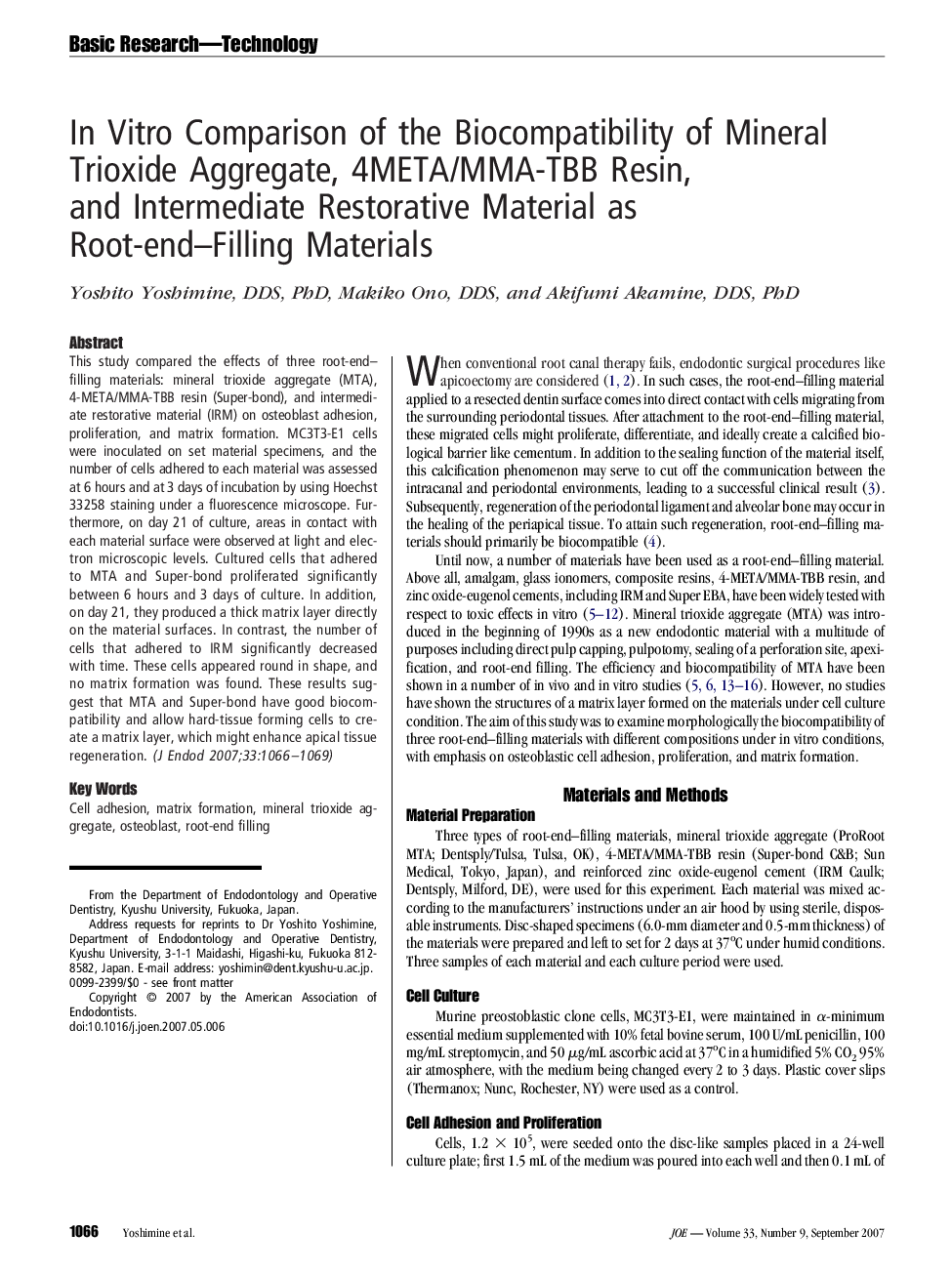| Article ID | Journal | Published Year | Pages | File Type |
|---|---|---|---|---|
| 3150844 | Journal of Endodontics | 2007 | 4 Pages |
Abstract
This study compared the effects of three root-end-filling materials: mineral trioxide aggregate (MTA), 4-META/MMA-TBB resin (Super-bond), and intermediate restorative material (IRM) on osteoblast adhesion, proliferation, and matrix formation. MC3T3-E1 cells were inoculated on set material specimens, and the number of cells adhered to each material was assessed at 6 hours and at 3 days of incubation by using Hoechst 33258 staining under a fluorescence microscope. Furthermore, on day 21 of culture, areas in contact with each material surface were observed at light and electron microscopic levels. Cultured cells that adhered to MTA and Super-bond proliferated significantly between 6 hours and 3 days of culture. In addition, on day 21, they produced a thick matrix layer directly on the material surfaces. In contrast, the number of cells that adhered to IRM significantly decreased with time. These cells appeared round in shape, and no matrix formation was found. These results suggest that MTA and Super-bond have good biocompatibility and allow hard-tissue forming cells to create a matrix layer, which might enhance apical tissue regeneration.
Related Topics
Health Sciences
Medicine and Dentistry
Dentistry, Oral Surgery and Medicine
Authors
Yoshito DDS, PhD, Makiko DDS, Akifumi DDS, PhD,
